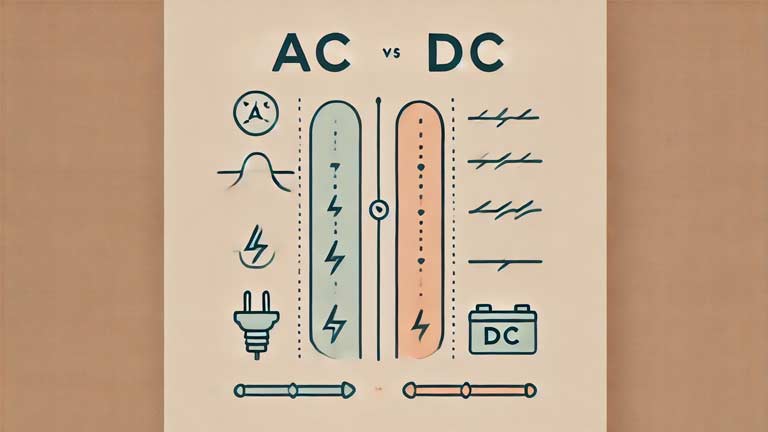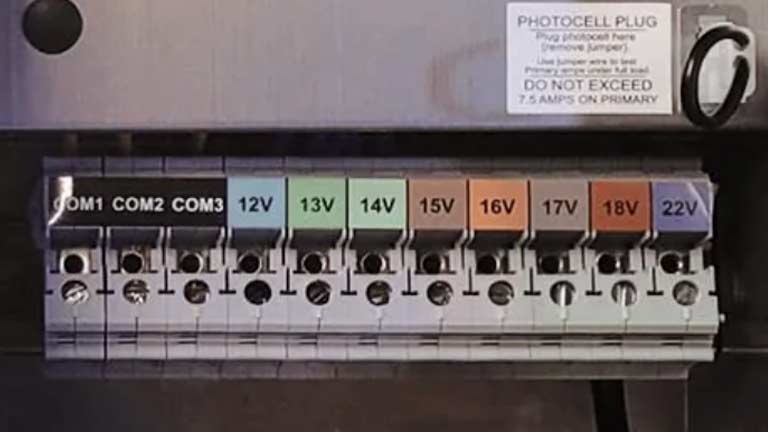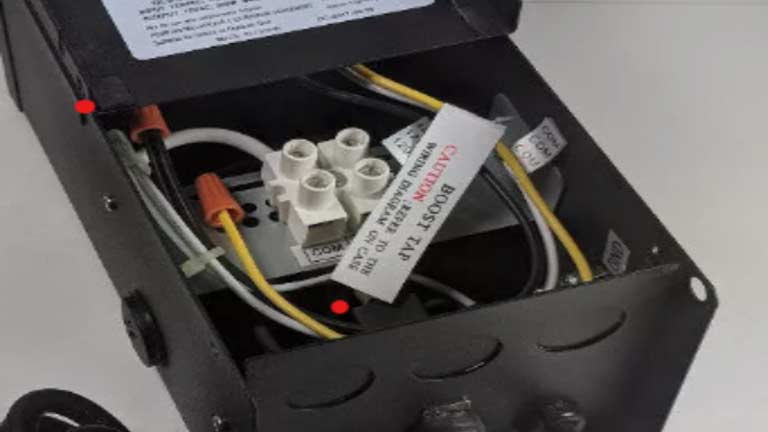Enjoy FREE SHIPPING on orders over $100 | Call us with any questions (800) 865-7221 Request a Call
Functionality, performance and reliability are what you can expect with AQ Lighting's selection of outdoor rated, constant voltage transformers. We stock 12V and 24V transformers, dimmable and non-dimmable versions with either magnetic or electronic cores so whatever you're looking for, we have it!
Voltage/Current: Most outdoor rated low voltage landscape transformers are constant voltage (as opposed to constant current) and have a 12 volt AC output. Many people are under the impression that the output is 12 volt DC but that is incorrect. This is a very important fact for whenever you are troubleshooting a transformer with a voltmeter. You will not get an accurate reading if the voltmeter is on the wrong current setting. Although most outdoor landscape transformers are 12 volt AC, some landscape fixtures or bulbs do operate on other voltages or current so always check the manufacturer’s specifications.


Multi Tap Transformer: A multi tap outdoor landscape transformer has multiple taps on the output side that can range from 12 to 22 volts. Having multiple taps with incrementally higher voltages was designed to offset voltage drop. Voltage drop is the decrease in voltage in an electrical circuit due to resistance. So in a landscape lighting application the first few fixtures may be receiving adequate voltage but farther along the run each fixture may receive less and less voltage until they either don’t work or experience issues like blinking. The resistance in the wire combined with the load or quantity of fixtures is causing the voltage to decrease. One way to fix this is to use a tap on your transformer that puts out a higher voltage.
Boost Tap Transformer: A boost tap transformer is the same as a multi tap transformer except that it usually only has 1 extra tap. Most boost tap 12 volt transformers have one 12 volt tap and one 15 volt boost tap.


Magnetic vs. Electronic: Magnetic transformers are the most common for standard outdoor landscape lighting applications. Magnetic transformers have a long life expectancy, they can handle higher temperatures and are typically built to withstand harsh weather conditions. Electronic transformers are a little different than magnetic transformers. To start, they are much smaller which is a great benefit if space is an issue. They can also be built to withstand harsh weather conditions but they typically lack the convenience of a housing for landing the low voltage cables like magnetic transformers typically have. Electronic transformers also are not usually set up for timers and photocells whereas many magnetic transformers either come with them built in or are made to easily accept them.
Common Misconception: Larger Transformers DO NOT make Voltage Flow Farther! If you have 50 watts of lighting on a 200’ run, a 75 watt transformer will work just as well as a 600 watt transformer. You will get the same amount of voltage drop no matter which transformer you use. Instead of using a larger transformer, use heavier gauge wire or split the run into two 25 watt runs. Smaller loads create less resistance so you will experience less voltage drop.
To keep it simple add up the total wattage of lighting for your system and add approximately 25% more for cushion. If you have 5 fixtures at 7 watts each and 4 fixtures at 3 watts each that is a total of 47 watts. 47 watts x 1.25 is 58.75 watts. The closest outdoor rated magnetic landscape transformer that AQ Lighting sells is 75 watts. So a 75 watt transformer would be perfect. In this example, If the owner had future plans to expand the system, it might be a good idea to go with a 150 watt transformer. This would allow for approximately 54 more watts of lighting with zero issues. If the owner knows that he will never add to the system, then there’s no reason to spend more money on a larger transformer. Common Misconception: “I already have an old transformer, but it's quite large. Is it too big for my new LED system?” The answer is no. Even if you have a 900 watt or 1200 watt transformer you can still use it on a small LED system. Your new system will only draw the power that it needs. Keep in mind that if you have been using your transformer for a halogen system you may be using a higher voltage tap to counter voltage drop. Once your system is converted to LED you typically no longer need to use the higher tap. Using too high of voltage can shorten the lifespan of your new system.
The easiest answer to this question is the most central location that has 120 volt power available. The main goal is to keep each lighting circuit as short as possible. Shorter runs require less wire, lighter gauge wire and a lot less labor to bury the wire. Longer runs are the exact opposite. They require more wire, heavier gauge wire, which is far more expensive, and more labor to bury the wire. Long runs are also way more susceptible to voltage drop. For large projects I recommend multiple transformers so that all lighting circuits can be as short as possible.
This is one of the most important questions that can be asked about a transformer. The answer may have a direct impact on which transformer is best for your application.
Smart Home / Smart Switch or Outlet: Smart home systems and smart switches and outlets have become hugely popular. If you plan to control your transformer with a smart system of any kind then you will want what I call a “dumb transformer”. A dumb transformer doesn’t have any built in electronics of any kind that controls when it turns on and off. You basically don’t want 2 systems interfering with one another.
Dimming an Outdoor Landscape Transformer: Dimming a transformer is not a big deal only if you have done all of your homework. Start by making sure that your outdoor landscape lights are dimmable. Many outdoor landscape fixtures are not dimmable or if they are they are dimmable, they have to be dimmed using a very specific method. Always refer to the manufacturer’s specifications. Next, make sure that you purchase a dimmable transformer. Again, not all transformers are dimmable. If they have built in electronics like timers, photocells or even relay switches then more than likely they can not be dimmed. A simple way to look at it is that you know that you would never want to dim a clock or a computer. Neither would function properly. The last step is to make sure that the dimmer switch is compatible with the transformer. All dimmer switches are not the same especially when dimming low voltage transformers. Here’s the good news. AQ Lighting does this everyday. If you have any questions we are here to help.
Photocells: Photocells are one of the most basic ways to control an outdoor landscape transformer. Without getting into the science of it, a photocell is basically just a switch that turns on at dusk and shuts off at dawn. Some landscape transformers have built in photocells or at least a special plug where a photocell can easily be added.
Timers: Most people are familiar with timers. They are really nothing more than a switch that turns the transformer on and off at specified times. Some landscape transformers have built in timers or a timer can easily be added.
Photocell & Timer Combination: This is one of the most popular combinations. It works well if you would like your lights to always come on at dusk and shut off at a specified time. Some people will then turn the lights back on at a specified time and then off again at dawn. Many landscape transformers have the built in timer and photocell combination or both can easily be added.
Backdown Timer: It doesn’t get much simpler than a backdown timer. They have a photocell that turns the transformer on at dusk and then gives you several options to turn off like 2, 4, 6, 8 hours or dawn. If you’re not into technology and you just want to keep it simple this is the timer to look for.
Astronomical Timer: This is an interesting timer. It’s not a smart timer as far as it does not use wifi or bluetooth but it is computerized. Once you input your geographical location, the timer knows sunset and sunrise. You input the time and date and It knows when to change to standard time or daylight savings time. Because it’s turned on and off with a computerized program and not relying on the actual sun, this is a great option for transformers that are mounted indoors like a garage, shed or basement.
As you can see there are many different types of outdoor landscape transformers as well as many different ways to control them or turn them on and off. Most often there is really no one right or wrong answer; it's mostly a matter of preference. If you have questions or you don’t feel like spending hours researching which transformer or controller is best for you, give us a call. We have a full staff of trained experts that will set you up with the perfect system.